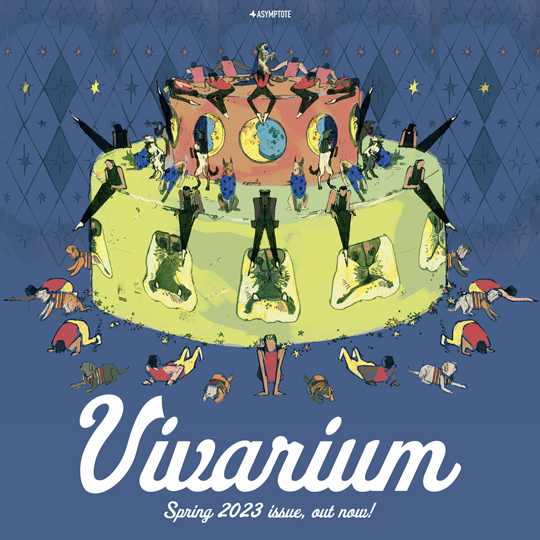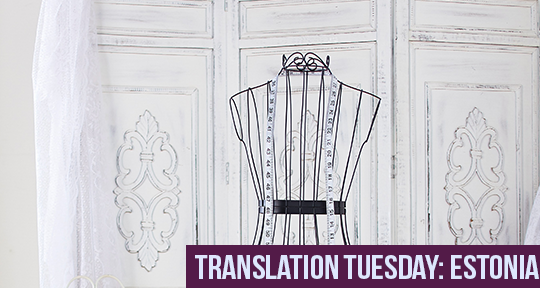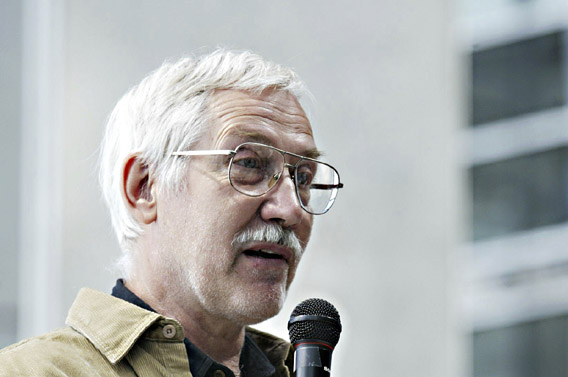This Translation Tuesday, enter the circles that defined Soviet-era fashion with Estonian novelist and ex-journalist Maimu Berg, whose novel House of Fashion fictionalises the strange sartorial world that she herself had inhabited when she worked for the Tallinn-based fashion magazine Siluett. In these extracts, we follow the wide-eyed Betti as she cavorts with a cast of fashion designers, post-censors from the Ministry of Culture, models and photographers, all this time wryly defending her role as a writer in this grand, far-flung industry. With D. E. Hurford’s translation, the energy of a lesser-known aspect in Soviet history is unveiled to English readers who are sure to be baffled by some of these playful anecdotes and the inside scoop.
Soviet Fashion.
To Moscow, to Moscow.
Drug-addict models.
Everyone who lived in the Soviet Union nurtured a pious dream of visiting Moscow. At least that was what most Muscovites thought. When an invitation was sent from Moscow to the houses of fashion in, say, Tashkent or Alma-Ata, to come and see the latest developments in Soviet fashion, scuffles would break out. Anyone with even the smallest bit of status felt that she should be the one to go to Moscow, the navel of the world, where smoked sausage, tinned crab, Polish scent, East German hair products, mother-of-pearl lipstick, and a preposterous selection of handbags, jumpers and winter boots could be bought. She should be the one who, after a dull and tedious meeting at the Soviet Union’s head house of fashion, should get to trudge through crowded tunnels full of pongy dour people and go “from GUM to TsUM” (the two big Moscow department stores of the time) and to fabled shops like Vanda, Vlasta and Leipzig, where the peoples’ republics sold their own products, mainly cosmetics. No shopper really thought about the actual meaning of “people’s republic”; any Soviet woman who was the least clued-up associated the phrase with those particular stores near the centre of Moscow. In the morning before these wondrous shops opened, there would be a queue of women patiently snaking its way in front of the doors. Technically the queuing had started back in their home cities—the provincial houses of fashion had waiting lists for those wanting a trip to Moscow and there could be a wait of up to three or four years before it was your turn.
A similar sort of passion also inflamed the Tallinn House of Fashion in a minor way, but inversely. Usually, at the coldest point of the year, no one had any desire to trundle off in the train to Moscow, go to considerable trouble to stay at a hotel (you might well have made a reservation, but that didn’t guarantee you anything), visit all the shops needed to work through the order list given to you by friends and colleagues, cover huge distances by metro and trolleybus, and doze off in lectures presenting the clothing models redesigned by Moscow fashion designers and stylised to fit Soviet fashion, accompanied by some silly nonsense about the latest trends in Soviet fashion. These trends tended to be the same as the trends available in the West a year before, just that the designs had been made more boring and less sexy. Visiting Moscow was nice when it was warm and when fashion shows were on the agenda, whether those of the Moscow house of fashion or, even better, smaller fashion shows by different embassies, or by some Western firm that had gone to the trouble and expense of coming to the bleak plains of Sarmatia in the hope of sooner or later striking it lucky and the vast, gaping emptiness of the Russian market opening up just for them.
The first time Betti ended up in Moscow as a staff member at the Tallinn House of Fashion she travelled with head designer Milla Säga, a striking lady, tall, alert and strong, with a completely un-Estonian nose and stylishly dressed, as befitted her profession, and on that occasion dressed particularly strikingly. They headed for Hotel Berlin, whose heyday was long past—the last time there had been carp swimming in the marble basin of its fountain, for guests to select one and get most of it at a formal dinner in the ostentatiously handsome hotel restaurant, had probably been during Lenin’s New Economic Policy of the 1920s. By now, however, the carp had long been eaten and the basin drained; now the hotel lobby stank of people and grain coffee over-sweetened with condensed milk—breakfast was being served. There was no hope of getting a room so early, but even more tragically, it seemed no reservation for the Tallinn House of Fashion could be found, even though the receptionist flicked back and forth through the worn bookings diary and even rang somewhere to ask.
Milla Säga, this sparkling lady who spoke Russian with an Estonian accent that sounded sweet in Betti’s ears and who was generally quite loud anyway, sharpened the tone by pointing to the dried-up fountain and informing all who wished to hear that it was “definitely here that she’d booked”. By an unfortunate error of Russian verb conjugation, however, she managed to inform everyone that it was definitely here she’d peed. The receptionist heroically stifled the laugh that emerged as her mind formed an image of the tall, elegant and self-confident Milla Säga tinkling the marble of the hotel fountain. However, she did understand what Säga meant to say, which was that she had personally sent the hotel a letter asking to book rooms for us. On this occasion, a Baltic accent was useful; without it the phone call probably wouldn’t have been made, and after a lot of faffing around and handing out copies of Siluett magazine (and some 25-rouble notes “getting lost” between their pages) Milla and Betti finally got the longed-for keys and clattered up in the lift to their floor. READ MORE…







